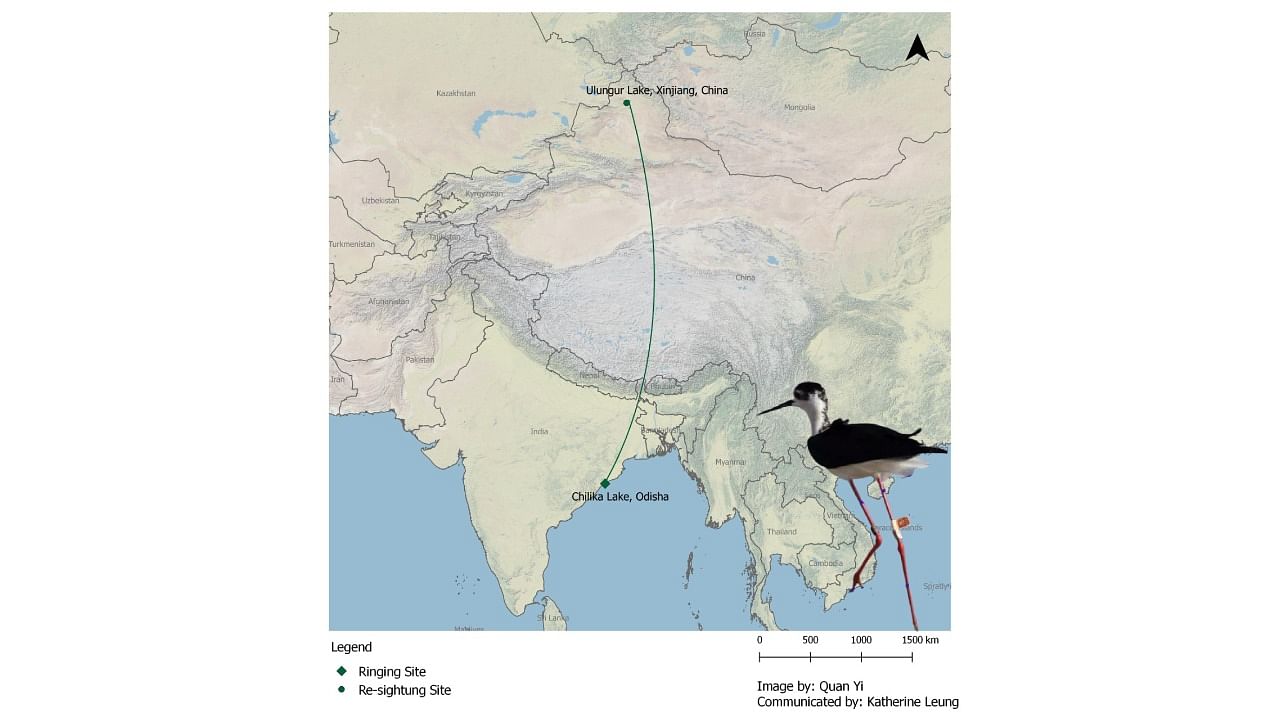
A black-winged stilt, which was tagged by the Bombay Natural History Society (BNHS), and recently landed in China, made its trip from Odisha’s Chilika Lake to Xinjiang province’s Ulungur lake, that much remarkable.
The wader (or shorebird) was tagged by the Mumbai-based BNHS in 2017 at the brackish water lake and shallow lagoon area of Chilika as part of its bird research. Researchers said it was interesting to see the stilt travelling all the way to Ulungur Lake, Xinjiang, China.
BNHS Deputy Director Dr S Balachandran said the organisation received an email from a bird observer Quan Yi, who had found the tag and wanted to confirm whether the society had tagged the bird.
“Chilika to China - Widely distributed and largely resident throughout the subcontinent, this Black-winged Stilt tagged in Chilika lake, Odisha in 2017 by the BNHS team has recently been sighted in Ulungur lake, Xinjiang, China,” BNHS remarked in a tweet.
In 1971, Chilika Lake was the first wetland in India to get a Ramsar Site tag; the area attracts about a million birds annually. Spread across over 1,100 sq km, the brackish water shallow lagoon is fed by about 52 rivers and rivulets.
Some black-winged stilts tagged earlier by the BNHS in Rajasthan have been sighted from Russia, Afghanistan and Pakistan. Recently, common redshank that was tagged by researchers at TS Chanakya wetland in Navi Mumbai was found at Altai in Russia.
“Birds are ambassadors of the environment as they spread the message of biodiversity,” said B N Kumar, director of NatConnect Foundation, a non-profit company that works towards nature preservation.
Bird lovers would find it quite exciting that migratory birds tagged in India are often tracked to many parts of the world and then they land back in India, he exclaimed.
This proves Chilika’s site fidelity—the practice of visiting the same sites that the birds are habituated to—said Kumar, who has been running a campaign to save wetlands and mudflats, the destinations of migratory birds.
Quoting BNHS studies, Kumar explained that many birds had also been found to land back at Navi Mumbai wetlands. This is significant not just for the love of birds and biodiversity, but from the air safety aspect as well.
BNHS has been saying time and again that the wetlands in Navi Mumbai must be conserved to allow birds confined to the areas that they used to. Any disturbance in the status of the wetlands could lead to a chaotic movement of birds that could endanger the safety of flights at Navi Mumbai International Airport, the BNHS said.